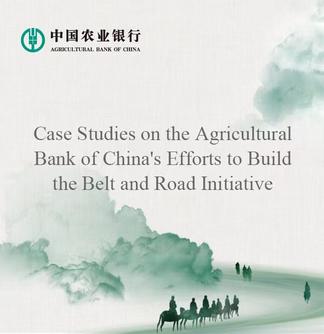German ceramic artist Karin Flurer-Bruenger is pictured at Taoxichuan Ceramic Art Avenue in Jingdezhen, east China's Jiangxi Province, April 8, 2025. (Xinhua/Du Juanjuan)
NANCHANG, April 24 (Xinhua) -- As dusk falls on the "porcelain capital" of Jingdezhen in east China's Jiangxi Province, 69-year-old German ceramic artist Karin Flurer-Bruenger routinely walks slowly through the art-lined alleys.
Warm light spills over the red-brick walls and bustling artisan tents, casting a gentle glow on the eclectic creations that catch her gaze. Each art piece is a silent conversation between artist and clay -- and Flurer-Bruenger is one of the many voices shaping this dialogue.
This marks her third month in Jingdezhen, a city steeped in over a thousand years of porcelain history and now reinvented as a global ceramics hub.
"It was once a dusty industrial city, and now it's clean and modern," she said. "I have all the possibilities around me -- with kilns, places, and people who are really specialized in ceramics, in porcelain, and lots of nice exhibitions. So I'm very happy to be here."
Flurer-Bruenger is a participant in the Migratory Bird Program at Jingdezhen's Taoxichuan Art Center -- an initiative launched in 2015 to invite artists from around the world to live, create and exchange ideas in this city brimming with creativity.
More than 4,300 foreign artists from over 50 countries and regions have taken part, drawn by the opportunity to work in international studios, experiment with ancient Chinese techniques, and leave behind works that become part of the city's evolving cultural landscape.
Inside Flurer-Bruenger's studio, the shelves are filled with neatly arranged bowls and cups, each with a unique shape and glaze. Family photos adorn the walls, adding a personal touch to the creative space.
"This little girl likes to draw a lot," she said with a smile, gently holding up her granddaughter's artwork. "I printed her drawings and made them on my ceramics."
Though raised in a family of engineers, it was the texture of wet clay, not machinery, that captured her imagination early on.
As she recalled, her father was a mechanical engineer and inventor, who was always sketching his new ideas. That early exposure sparked her interest in handmade work. To pursue that interest, she apprenticed with a master potter.
"This great master has influenced my whole life since then. I have been fascinated by the possibilities of that material all my life," she said.
German ceramic artist Karin Flurer-Bruenger shows artwork at her studio at Taoxichuan Ceramic Art Avenue in Jingdezhen, east China's Jiangxi Province, April 8, 2025. (Xinhua/Du Juanjuan)
Decades later, her curiosity and compassion continue to fuel new ideas. At the moment, she's focused on two creative projects.
The first is about light and humanity. She aims to embody human personalities in her handmade ceramic lamps, each featuring both a rough and smooth side, just like people. The light inside is meant to illuminate them and make them shine.
Her second project is a mission of empathy. Her past experience of helping children in need made her deeply empathetic toward those who suffer from hunger. So she decided to create 150 bowls and sell them to raise money for children who didn't have enough to eat. "This is a charity project," she explained. "The bowl has always been a symbol for eating."
In Jingdezhen, where ancient craftsmanship meets global creativity, Flurer-Bruenger has found both inspiration and innovation. She's experimenting with thin-body and openwork porcelain techniques -- honed through local mentorship and supported by the studio's shared kilns.
"Even if every piece doesn't turn out, I learn something valuable," she said, gesturing with a laugh toward a test kiln. "And look -- this one was made in Germany!"
Her artistic journey reflects the broader China-Germany exchange sparked by porcelain, a connection that traces back several centuries.
In the early 1700s, German alchemist Johann Friedrich Böttger cracked the secret of making hard-paste porcelain, a technique long perfected in China. He called it the new "white gold."
In 1710, the first porcelain factory in Europe was founded in Meissen, Germany, marking the start of an over-300-year legacy. Meissen porcelain soon gained popularity in Europe and was hailed as its finest.
Later, between 1868 and 1872, German geographer Ferdinand von Richthofen traveled through China. In his travel journals, he introduced the word "kaolin" to describe the white clay used in Jingdezhen's ceramics, a name derived from the place of its discovery, the nearby Gaoling Village.
Since then, porcelain made of kaolin has traveled the world along the Maritime Silk Road -- admired for its smooth, refined beauty. It became a symbol of Chinese craftsmanship and opened the door for cultural exchange with the West.
Now, centuries later, the exchange continues. Notably, Jingdezhen has established partnership ties with more than 180 cities in 72 countries. Through events like the Jingdezhen-Meissen White Gold Exhibition and live ceramic-making showcases in Berlin, this Chinese city is reviving and reinventing its legacy as a global ceramics capital.
This photo shows ceramic artworks at a creative porcelain workshop in Jingdezhen, east China's Jiangxi Province, June 5, 2024. (Xinhua/Liu Tianyu)
In recent years, Jingdezhen has worked to create new platforms for international exchange, actively promoting ceramic culture through exhibitions, outreach and collaboration. At its busiest, the city is home to over 5,000 ceramic artists, designers and craftspeople from around the world, who come and go like migratory birds.
As China advances its modernization drive, cultural confidence has become a key focus. With strong government support, ceramic culture has evolved into an important symbol of the country's soft power.
In 2006, Jingdezhen's traditional handmade porcelain techniques were included in the first batch of China's national intangible cultural heritage, helping to protect and preserve this valuable tradition.
Places like Jingdezhen now serve as vibrant stages for global dialogue, where artists like Flurer-Bruenger are not just inheriting ceramic traditions, but also actively contributing to shaping a shared cultural future -- one that is passed down through generations and re-imagined by new hands.
With a strong desire to pass on these traditions, the German ceramicist was heartened to see promise in the younger generation. "I think it's good to see that there are lots of young people here. Also, young German people use social media, TikTok, or everything else. Maybe this is a way you can make that brilliant porcelain known," she said. "Young people are again interested in all handmade things, and this may be the future of ceramics."
"I love working with young people and teaching pottery. I believe it's an important craft for humanity, and I hope more people around the world will learn about it in the years to come," Flurer-Bruenger added.




 A single purchase
A single purchase









